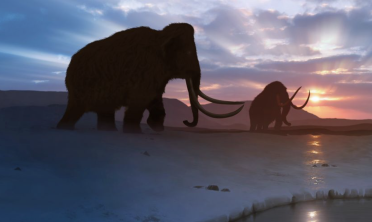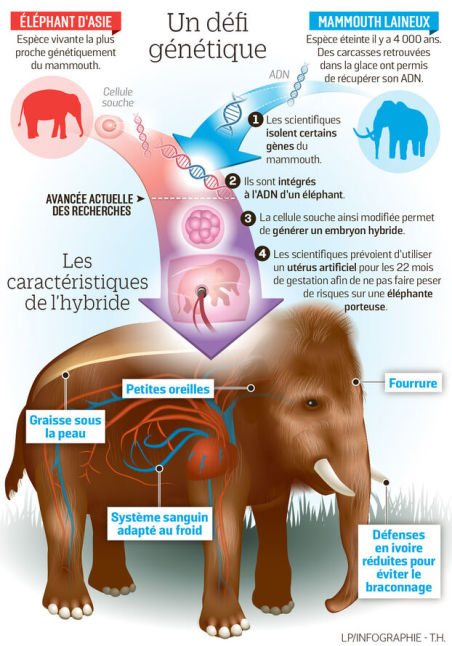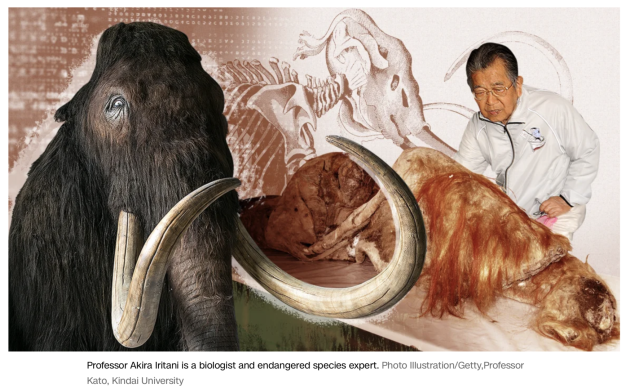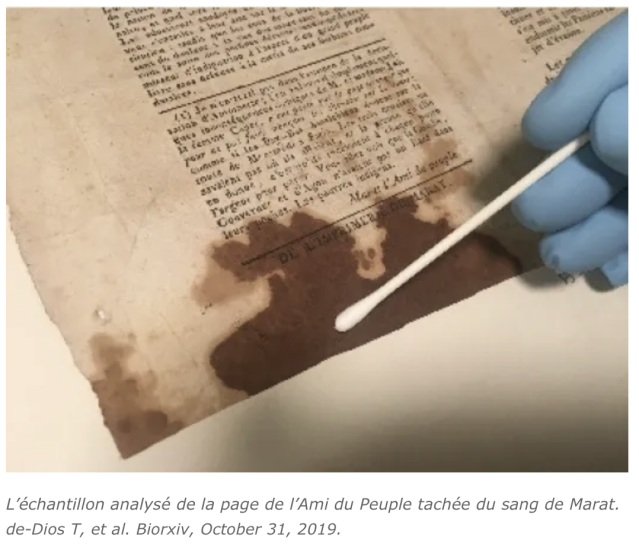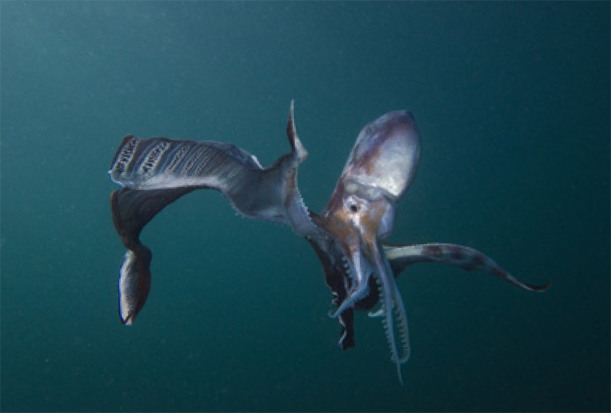
Mammoth DNA dating back 1.2 million years was sequenced! This is the first time that DNA as old as this has been sequenced. An international team of geneticists sequenced this DNA inside tooth enamel, preserved by the cold temperatures of the permafrost. It was thought that woolly mammoths had developed thick coats to adapt to the cold climate. In fact, genes associated with thermoregulation and hair growth were already present in the genomes of the first mammoths. Fev/21.
https://www.nature.com/articles/s41586-021-03224-9
https://www.youtube.com/watch?v=IPe4IdgKGdQ
https://edition.cnn.com/2024/03/09/world/woolly-mammoth-elephant-stem-cells-scn/index.html
https://hms.harvard.edu/news/mammoth-solution
https://www.nature.com/articles/s41598-019-40546-1
The mammoth soon? Engineering a woolly mammoth hybrid.
Wooly mammoths, which were about the size of modern African elephants, died out about 4000 years ago.
After decades of trying, the 90- year- old Japanese biologist Akira Iritani still dreams of ressurecting a woolly mammoth. When he heard about a well- preserved specimen, a 28 000 year-old baby mammoth called Yuka, embedded in the Siberian permafrost in 2012, he knew that he had to investigate. In this experiment, using a process known as nuclear transfer, Japonese and Russian scientists collected 88 nucleus-like-structures from Yuka's muscle tissue and transferred them into mouse ovocytes. Signs of biological activities were visualized by a live-cell imaging technique.
Since 2015, geneticist George Church's teams from Harvard University have been aiming to produce a hybrid embryo between an elephant and a mammoth, using the Crispr Cas9 molecular scissors (Nobel Prize in Chemistry 2020) that can allow the scientists to cut DNA at the chosen location. They extract and replace parts of the Asian elephant genome with DNA fragments from mammoths preserved.
Church and Eriona Hysolli, Colossal's head of biological sciences, revealed they had reprogrammed cells from an Asian elephant, the mammoth's closest living relative, into an embryonic state, the first time stem cells have been derived from elephants cells. These modified cells, known as Induced Pluripotent Stem Cells or IPSC, can be further teased in the lab to grow into any kind of elephant cells. Genetic changes can be made to give an Asian elephant the genetic traits it needs to survive in the Arctic. These include a woolly coat, a layer of insulating fat and smaller ears. The research team has already analyzed the genomes of 53 woolly mammoths from ancient DNA recovered from fossils.
These genetically modified elephants would thrive in the cold and contribute to preserving and restoring Arctic environments. Northern permafrost region soils contain 1,460-1,600 billion metric tons of organic carbon, about twice as much as currently contained in the atmosphere. This pool of organic carbon is climate- sensitive.
Many scientists disagree with bringing mammoths back to life.
Cranio-facial trauma diagnosis using paleo-proteotyping of a blood sample from Robespierre (1794). Tradition has it that the Politician Robespierre, a famous tribune of the French revolution, was lying, wounded in the face by a bullet from a firearm, on an 18th century desk, and left a trace of blood there, before being guillotined the next day (1794). This piece of furniture is now kept in the National Archives (Paris). A paleo-proteomic study was carried out on several brown stains on the leather of the desk, which confirmed the human blood nature of the sample, but also identified the protein signature of different cranio- facial organs. This confirms not only the historical anecdote surroudnig this desk, but also the importance of contemporary ballistic lesions on the eve of Robespierre's death. This demonstrates the importance and precision of paleoproteomics in paleopathology and for the examination and identification of the precise nature of stains and micro-traces on old samples.
https://www.biorxiv.org/content/10.1101/825034v1.full
Scientists have analyzed a bloodstain from Marat, who was assassinated by Charlotte Corday in 1793, in a bath intended for him to treat a skin condition. Genome analysis (of all the genetic material in the sample) revealed the presence of human DNA as well as yeast, bacteria, and RNA frm viruses. All sequences are considered human or non-human reads. Scientists were able to study a large amount of DNA. They obtained 568 million reads from the bloodstain, 74 million of which belonged to human DNA. No pathogens such as syphilis, leprosy or scrofula (tuberculosis located on skin) were detected. They detected the yeast M. restricta, which, depending on the state of health of the individuals, can be responsible for an inflammatory skin disease, a low amount of Staphylococcus aureus, and a large amount of Propionibacterium acnes, also responsible for an inflammatory skin disease (this bacterium is different from the actual bacterium due to mutations). The scientists concluded the study by explaining that Marat suffered from a serious skin disease, possibly due to a multi-microbial infection.
La pieuvre violacée de Shimane. On n'a longtemps connu de cette espèce que les femelles. En effet, les mâles sont cent fois plus petits: les femelles mesurent 2 m et les mâles 2.4 cm! C'est l'espèce qui montre le dimorphisme sexuel le plus grand de tout le règne animal. La taille minuscule des mâles leur permet de concentrer toute leur énergie sur un seul objectif: trouver et féconder une femelle. Il y consacrent leur vie entière. Leur corps se résume à une paire de grands yeux pour mieux repérer la femelle et à une énorme poche de sperme. Lorsque la mâle rencontre une femelle, il lui plante dans le corps un tentacule spécial (hectocotyle) et meurt. C'est "l'amour kamikaze". Ainsi, il n'est pas rare de rencontrer des femelles lardées de minuscules banderilles amoureuses, uniques traces de leurs brèves rencontres avec des mâles de passage.
